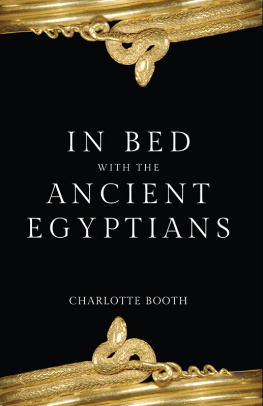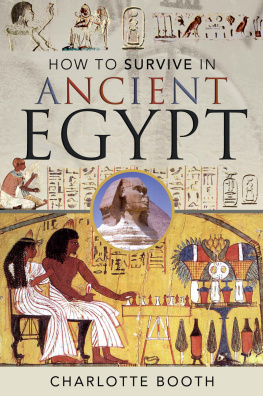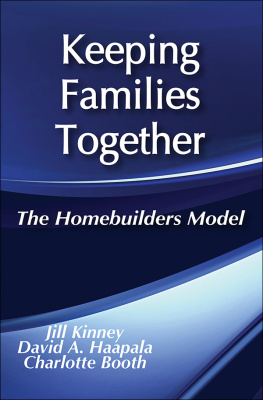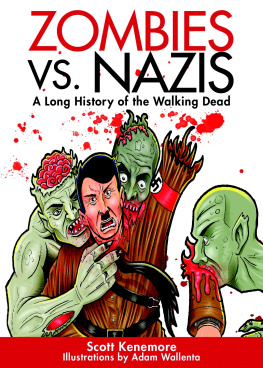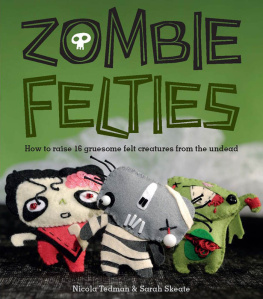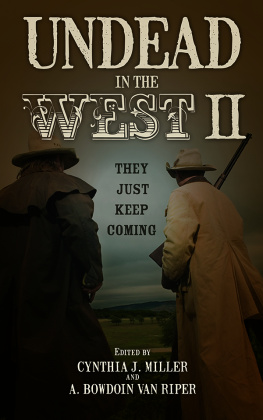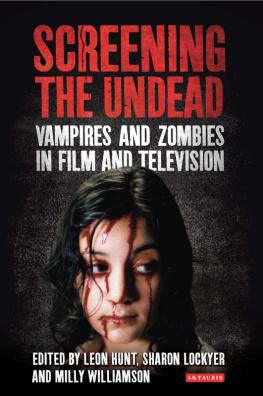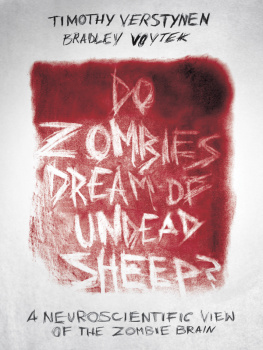A HISTORY OF THE UNDEAD
A HISTORY OF THE UNDEAD
MUMMIES, VAMPIRES AND ZOMBIES
CHARLOTTE BOOTH
First published in Great Britain in 2021 by
PEN AND SWORD HISTORY
An imprint of
Pen & Sword Books Ltd
Yorkshire Philadelphia
Copyright Charlotte Booth, 2021
ISBN 978 1 52676 906 0
eISBN 978 1 52676 907 7
Mobi ISBN 978 1 52676 908 4
The right of Charlotte Booth to be identified as Author of this work has been asserted by them in accordance with the Copyright, Designs and Patents Act 1988.
A CIP catalogue record for this book is available from the British Library.
All rights reserved. No part of this book may be reproduced or transmitted in any form or by any means, electronic or mechanical including photocopying, recording or by any information storage and retrieval system, without permission from the Publisher in writing.
SJmagic DESIGN SERVICES, India.
Pen & Sword Books Limited incorporates the imprints of Atlas, Archaeology, Aviation, Discovery, Family History, Fiction, History, Maritime, Military, Military Classics, Politics, Select, Transport, True Crime, Air World, Frontline Publishing, Leo Cooper, Remember When, Seaforth Publishing, The Praetorian Press, Wharncliffe Local History, Wharncliffe Transport, Wharncliffe True Crime and White Owl.
For a complete list of Pen & Sword titles please contact
PEN & SWORD BOOKS LIMITED
47 Church Street, Barnsley, South Yorkshire, S70 2AS, England
E-mail:
Website: www.pen-and-sword.co.uk
Or
PEN AND SWORD BOOKS
1950 Lawrence Rd, Havertown, PA 19083, USA
E-mail:
Website: www.penandswordbooks.com
Illustrations
Mummies
Fig 1 Coffin for modern mummification. Copyright Summum. Used by Permission. All Rights Reserved.
Fig 2 Mummy plant pot. Canada, Halloween 2019. Photograph Courtesy of David Valentine.
Fig 3 The Jeremy Bentham auto-icon in a meeting at UCL. Photograph Courtesy of UCL Museums.
Fig 4 Lord Carnarvons grave on Beacon Hill at Highclere. Photograph by the author.
Zombies
Fig 5 Halloween zombies, Canada 2019. Photograph courtesy of David Valentine.
Fig 6 Mariachi Band at the Toronto Zombie Walk, 2011. Photograph by Stacie DaPonte. Wikimedia Commons.
Fig 7 Decontamination suits at the Toronto Zombie Walk, 2011. Photograph by Stacie DaPonte. Wikimedia Commons.
Fig 8 Zombie Island Massacre (1985) film poster. There is only one zombie in this film, which is part of a voodoo ritual. Courtesy of Free Classic Images https://freeclassicimages.com/Film_Posters.html
Vampires
Fig 9 Whitby Abbey, Yorkshire. Photograph by the author.
Fig 10 The Circle of Lebanon, Highgate Cemetery, where the Charles Fisher Wace Mausoleum is located. Picture by Michael Reeve, Wikimedia Commons.
Fig 11 Bran Castle, Romania. Photograph by the author.
Fig 12 Draculas House, Sighisoara, Romania. Photograph courtesy of BKB Photography.
Fig 13 The Dracula Experience at Draculas House, Sighisoara, Romania. Photograph courtesy of BKB Photography.
Fig 14 Vampire make-up kits, Halloween 2019. UK. Photograph by the author.
Introduction
In the modern West we are fascinated by reanimated corpses in the form of mummies, zombies and vampires, making them a popular addition to the media. In the following pages we will discuss all the ways in which the reanimated corpse is a fundamental part of literature, movies and popular culture and how this has changed over the past century. Why contemporary society is fascinated and entertained by the undead is not easy to pinpoint, but as a society we seem to revel in being scared by tales of things that go bump in the night.
This fascination with the reanimated dead, however, is not a modern phenomenon and has existed around the world for thousands of years. This ancient fascination was born out of superstition and a genuine fear of the dead returning rather than as macabre entertainment. This book will discuss in depth how these ancient origins have influenced the modern representation of the reanimated corpse. In a volume of this size it would be impossible to include every instance of the undead in world folklore so I have had to choose only those aspects that are relevant to the modern representation of mummies, zombies and vampires in the West. In much of the folklore the boundaries are blurred between the creatures, with the addition of werewolves and witches thrown into the mix. Unless they can clearly be identified as one of the three under discussion they have been omitted.
In pre-modern Fiji, for example, the fear of the dead was incorporated into a coming-of-age ceremony for young boys:
Beginning with puberty, boys were taken at night to an area where the adult men had placed a group of bloody supposedly dead and decaying bodies covered with intestines. The boys were forced to crawl through the dead bodies which suddenly came to life. Boys who showed fear were denied manhood.
While a fascinating introduction to gender politics, superstition and a blatant disregard for hygiene, this case cannot be directly connect to common myths of vampires or zombies and therefore has been omitted from the discussion.
My own fascination with the undead came from my career as an Egyptologist and, therefore, a passion for mummies. I have even written about The Curse of the Mummy in two publications ( The Curse of the Mummy (Oneworld) and The Myth of Ancient Egypt (Amberley)) but wanted to explore mummies further as well as extend the research process to other reanimated corpses. However, the myth of the reanimated mummy is remarkably different from the myths of vampires and zombies. I found this extremely disappointing as the difference is such that it could almost be argued that they should not be included in this book. This is because the myth of the reanimated mummy is a modern Western construct taken from literature and adapted by the movies, whereas vampires and zombies have a far longer folkloric history. There is, therefore, less distinction between the Western medias reanimated mummy (). Everything is connected to the curse mythology devised from literature and perpetuated by the archaeologists themselves. There are in fact more people today who believe in the curse of the mummy and the perceived danger than a century ago when the myth was created; which in itself is a fascinating social observation.
For many years I have been an avid fan of horror movies and books and so it seemed a natural progression to combine my love of horror with my love of research and write a book about it. It is a great feeling to declare watching B-movie zombie flicks as research and be able to state Im working while watching True Blood . I have learned, though, while writing this book that the undead genre is bigger than I anticipated and each section could be developed further into a book of its own. This book, therefore, could be considered an introduction to the history of the undead.
It is laid out in three sections: Mummies, Zombies and Vampires. Each section is divided into two chapters: the first outlining how the reanimated corpse in question is presented in the modern West in movies, literature and other media where appropriate; the second then investigates the history behind the modern representations, looking at folklore, mythology, religion and archaeology. Wherever possible, first-hand accounts and primary sources are used, but when dealing with folklore and superstition a lot of the evidence is hearsay.


